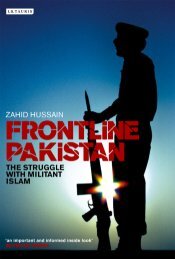US-Pakistan Relations: The Way Forward - Arz-e-Pak
US-Pakistan Relations: The Way Forward - Arz-e-Pak
US-Pakistan Relations: The Way Forward - Arz-e-Pak
Create successful ePaper yourself
Turn your PDF publications into a flip-book with our unique Google optimized e-Paper software.
“In 1979, the Iranian revolution andthe Soviet invasion of Afghanistan,renewed American interest inimproving the <strong>US</strong>-<strong><strong>Pak</strong>istan</strong>relationship.”Kashmir. A smaller but well-trained <strong><strong>Pak</strong>istan</strong> Army equipped with <strong>US</strong> weaponry,was able to defend the country against a larger force.<strong><strong>Pak</strong>istan</strong> also played a pivotal role in bridging the gap between theUnited States and China when, President Richard M. Nixon, decided to beginthe process of normalizing relations with Beijing. In July 1971, <strong><strong>Pak</strong>istan</strong> facilitatedthe secret mission to China undertaken by Dr. Henry Kissinger, the<strong>US</strong> Secretary of State. Actually, the first meeting between the two countriestook place aboard a <strong><strong>Pak</strong>istan</strong> Airlines plane flying to Beijing. 5 <strong><strong>Pak</strong>istan</strong> soonpaid the price for this diplomatic activism: India, exploiting the political turmoilafter the 1970 <strong><strong>Pak</strong>istan</strong>i general elections, attacked <strong><strong>Pak</strong>istan</strong>’s easternwing (now Bangladesh) with support from the <strong>US</strong>SR. In the midst of this crisis,<strong><strong>Pak</strong>istan</strong> turned to the United States for assistance, but was met with a distressingrefusal. <strong>The</strong> war resulted in the division of <strong><strong>Pak</strong>istan</strong>: West <strong><strong>Pak</strong>istan</strong>became <strong><strong>Pak</strong>istan</strong> and East <strong><strong>Pak</strong>istan</strong> became the independent country of Bangladesh.In 1972 as a consequence of this strategic loss a socialist democraticpolitical party, the <strong><strong>Pak</strong>istan</strong> Peoples Party, came to power. Accordingly,<strong>US</strong>-<strong><strong>Pak</strong>istan</strong> relations, which had already deteriorated because of the lack of<strong>US</strong> support in the 1971 war, declined further as the United States did not favora socialist government in <strong><strong>Pak</strong>istan</strong>.Twin events in 1979, the Iranian revolution and the Soviet invasion ofAfghanistan, renewed American interest in improving the <strong>US</strong>-<strong><strong>Pak</strong>istan</strong> relationship.<strong><strong>Pak</strong>istan</strong> suddenly became a key geostrategic player as it served as a bufferbetween the <strong>US</strong>SR and the Persian Gulf. <strong>The</strong> United States then decided to fighta proxy war in land-locked Afghanistan, and America sought <strong><strong>Pak</strong>istan</strong>’s supportto spearhead this fight. General Zia ul Haq who had assumed control of <strong><strong>Pak</strong>istan</strong>in a 1977 military coup offered America <strong><strong>Pak</strong>istan</strong>i support in the effort to drivethe Soviets from Afghanistan. <strong><strong>Pak</strong>istan</strong> more than served the <strong>US</strong> aims and wasinstrumental in forcing the Soviet Union to leave Afghanistan in 1988.In retrospect, the period from 1979 to 1988 was a golden period in<strong>US</strong>-<strong><strong>Pak</strong>istan</strong> relations. Unfortunately, both the governments remained fo-86 Parameters













